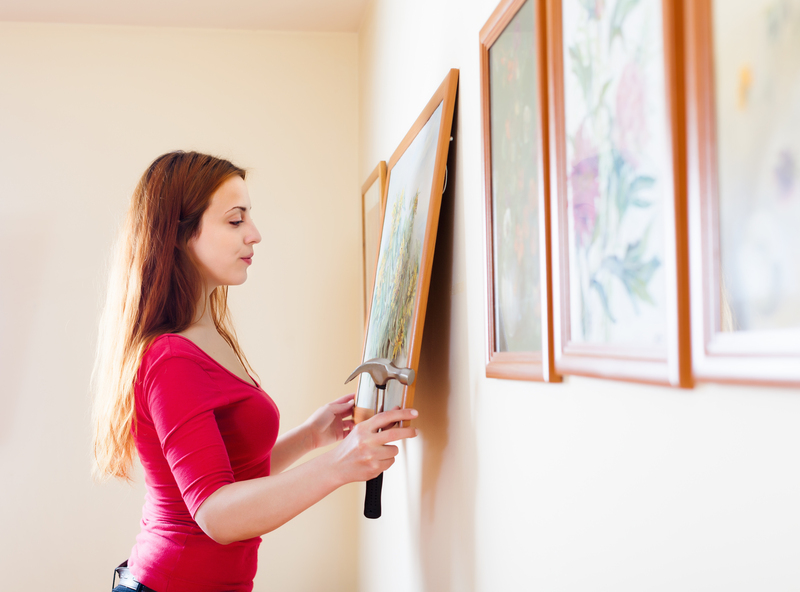A Melodious Move: Professionals Handle Pianos Best
Posted on 23/06/2025
A Melodious Move: Professionals Handle Pianos Best
Moving a piano isn't like shifting a regular piece of furniture; it's an intricate blend of art and science. If you're considering relocating your cherished instrument, remember: piano moves are a melodious move best left to professionals. Discover why entrusting your grand or upright piano to expert hands saves you time, money, and potential heartbreak.
Understanding the Complexity of Pianos
Pianos, whether grand, upright, or digital, are among the most intricate and delicate musical instruments. Each contains thousands of moving parts, strings under high tension, and sensitive components demanding utmost care. Beyond their musical worth, many pianos possess sentimental and monetary value, making their safe transport crucial.
- Weight & Size: Upright pianos average 300-500 lbs, while grand pianos can exceed 1,200 lbs.
- Sensitivity: Internal mechanisms can be easily damaged by jostling or improper handling.
- Shape: The asymmetric and awkward form makes them challenging to maneuver through tight spaces.
- Finishes: Polished wood, lacquer, and ornate details are susceptible to scratches or chips.
Why Opt for Professional Piano Movers?
Choosing professionals for your piano move is the wisest step you can take. Here's why:
- Expertise in Handling and Transport: Experienced piano movers know how to dismantle, pack, lift, and reassemble pianos without risking damage.
- Specialized Equipment: Movers use piano skids, boards, dollies, ramps, and heavy-duty blankets, designed specifically for piano transit.
- Safety: Protecting you, your home, and your precious instrument from harm is a priority. Professionals minimize risks of injury and property damage.
- Insurance Coverage: Reputable piano moving companies offer insurance, securing your investment against unforeseen mishaps.
- Time and Stress Savings: Avoid the logistical nightmare and physical strain; let professionals manage every aspect of the move.

The Professional Piano Moving Process
Let's demystify the steps professionals take to ensure your melodious move is safe and seamless:
Initial Assessment
Every successful move begins with a thorough assessment. Movers evaluate:
- Type and dimensions of the piano
- Distance of the move (local or long-distance)
- Obstacles such as stairs, doorways, and narrow hallways
- Flooring and environmental factors
This ensures they plan the route, select the best equipment, and allocate the right number of movers.
Disassembly and Protection
Certain pianos, especially grands, require partial disassembly--removing legs, pedals, or music stands for safe transport. Pros then:
- Wrap and cushion each part: Heavy-duty blankets and padding shield the piano from scratches or impacts.
- Secure moving parts: Keys and lids are locked or fastened to prevent accidental opening.
Safe Lifting and Navigating Obstacles
Utilizing teamwork and specialized tools, professional movers carefully lift and maneuver your piano, even through the trickiest spaces. Dollies and skids distribute weight, while ramps and straps ensure slow, controlled movement.
Transit and Reassembly
In the moving truck, pianos are anchored securely to avoid shifting during transit. On arrival, the process is reversed--reassembly is precise, and final placement is in your chosen spot. Professionals often recommend tuning after a move, since even gentle handling can affect a piano's sound.
Risks of DIY Piano Moves
While a do-it-yourself move may seem appealing to save costs, it comes with significant hazards:
- Injury Risk: Pianos are extremely heavy and can cause severe physical strain or injury if not handled properly.
- Instrument Damage: Dropping, bumping, or improper positioning may result in costly or irreversible harm.
- Property Damage: Door frames, walls, and floors are at risk. Pianos have been known to crack tiles or collapse stairs when mishandled.
- Lack of Insurance: Personal moves are rarely insured, leaving you financially responsible for any losses.
- Emotional Toll: Losing or damaging a beloved family piano can be more devastating than the financial loss.
When To Call a Professional Piano Moving Company
Not all household moves require specialists, but these scenarios do:
- You own a grand piano, baby grand, or concert upright
- The instrument must navigate stairs, elevators, or narrow turns
- The piano is vintage, antique, or highly valuable
- You want peace of mind throughout your melodious move
How to Choose the Best Piano Moving Professionals
Selecting the right mover is key. Follow these tips:
- Certification: Choose movers trained or certified in piano relocation.
- Experience: Ask about their track record and testimonials from satisfied clients.
- Equipment: Ensure they utilize industry-standard tools and protective gear.
- Insurance: Verify insurance to protect your piano during transit.
- Transparency: Obtain a written quote detailing all services and fees.
Professional piano movers often offer additional services, such as storage, tuning referrals, and cleaning.
Cost Considerations for a Melodious Piano Move
While hiring experts for your piano moving needs may seem expensive, it is a sound investment. Costs typically vary by:
- Piano size and weight
- Distance (local or long-distance move)
- Complexity (stairs, narrow routes, obstacles)
- Special requirements (hoisting, crane services, climate-controlled storage)
Request estimates from several movers and select the one that balances experience and cost. Remember, the expense of repair or replacement after a mishap far outweighs the cost of professional service.
Long-Distance and International Piano Moves
Relocating across the country or overseas? Long-distance and international piano moves demand even greater expertise. Movers coordinate shipping logistics, customs documentation, specialized crating, and climate-controlled transport to ensure your piano arrives in perfect condition.
Caring for Your Piano After the Move
Once your piano is delivered, take these steps to maintain its melodious sound:
- Allow the piano to acclimate for a few days to its new environment before tuning.
- Keep your instrument away from direct sunlight, heat sources, and humidity fluctuations.
- Schedule a professional tuning and inspection to address minor shifts caused by the move.
- Regularly dust and clean the exterior with a soft cloth; avoid harsh chemicals.

A Melodious Move: The Harmony of Expertise
When it comes to relocating pianos, professionals handle pianos best. From their in-depth knowledge and refined techniques to specialized equipment and insurance guarantees, their value cannot be overstated. Whether your treasured instrument moves next door or halfway around the world, let experts orchestrate your melodious move.
Entrust your piano's journey to the skilled hands of professional movers, ensuring its music continues to fill your home for generations to come.
Frequently Asked Questions About Professional Piano Moving
Is hiring a piano mover really necessary?
Absolutely. The complexity, weight, and delicate nature of the instrument make moving it a highly specialized task. Professional piano movers minimize risks, protect your investment, and offer peace of mind.
How far in advance should I schedule a piano move?
Aim to book your melodious move at least 2-4 weeks in advance, especially during busy moving seasons. Allow additional time for long-distance or international moves.
Can standard movers relocate my piano?
Most standard movers lack the specialized skills and equipment needed for piano relocations. Always choose companies that specialize in piano transportation for the best results.
How should I prepare my piano for moving day?
Remove any loose items, sheet music, or accessories. Clean the exterior gently and inform your movers of special considerations. Let the moving team handle the protective wrapping and disassembly.
How soon can I play my piano after moving?
Allow your piano to rest and acclimate to its new environment for 1-2 days. Then, schedule a tuning with a professional piano technician to restore optimal sound quality.
Remember, when it comes to ensuring a melodious move, there's no melody sweeter than one played on a piano cared for by professionals.







